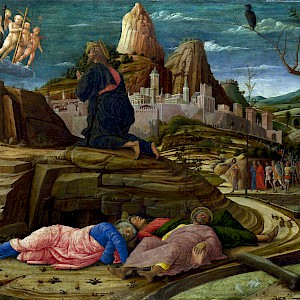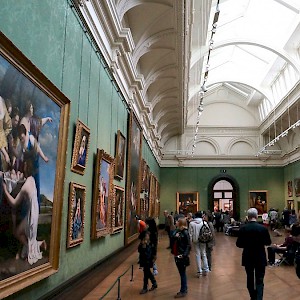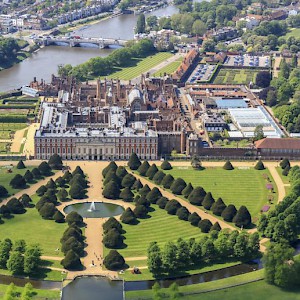Andrea Mantegna
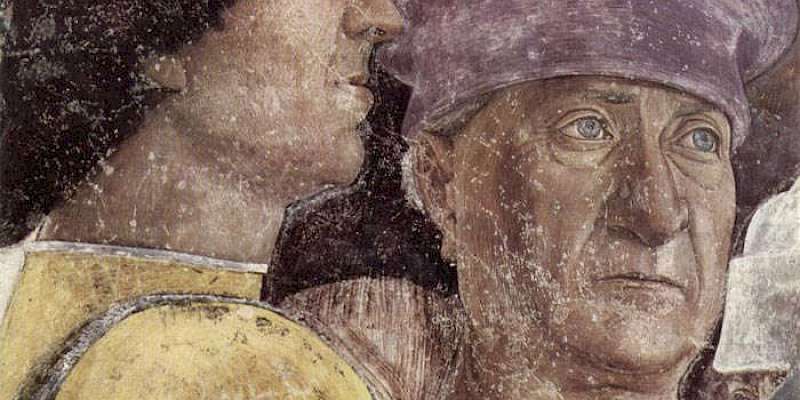
Probable Self Portrait hidden in a detail from La Camera degli Sposi (1467–74) by Andrea Mantegna, in the Palazzo Ducale, Mantova, Italy
Italian Renaissance master of perspective
Andrea Mantegna (1431–1506) excelled at three of the main tenets of Renaissance art:
- He was an early perfector of perspective, which he could warp masterfully.
- He was a keen observer of anatomy, which he modeled with sculptural exactitude.
- He made careful studies of ancient architecture, the proportions and details of which he incorporated into his paintings.
Mantegna developed a sculptural and very Classical mode of High Renaissance painting quite different from—but just as ethereally beautiful as—that of his famous Venetian brother-in-law Giovanni Bellini, and in 1460 he became court painter to the Gonzagas of Mantova.
Selected works by Andrea Mantegna in England
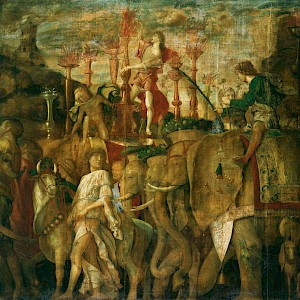
The Triumphs of Caesar V: Elephants (1484–92) by Andrea Mantegna, in Hampton Court Palace, London in the Hampton Court Palace, London









